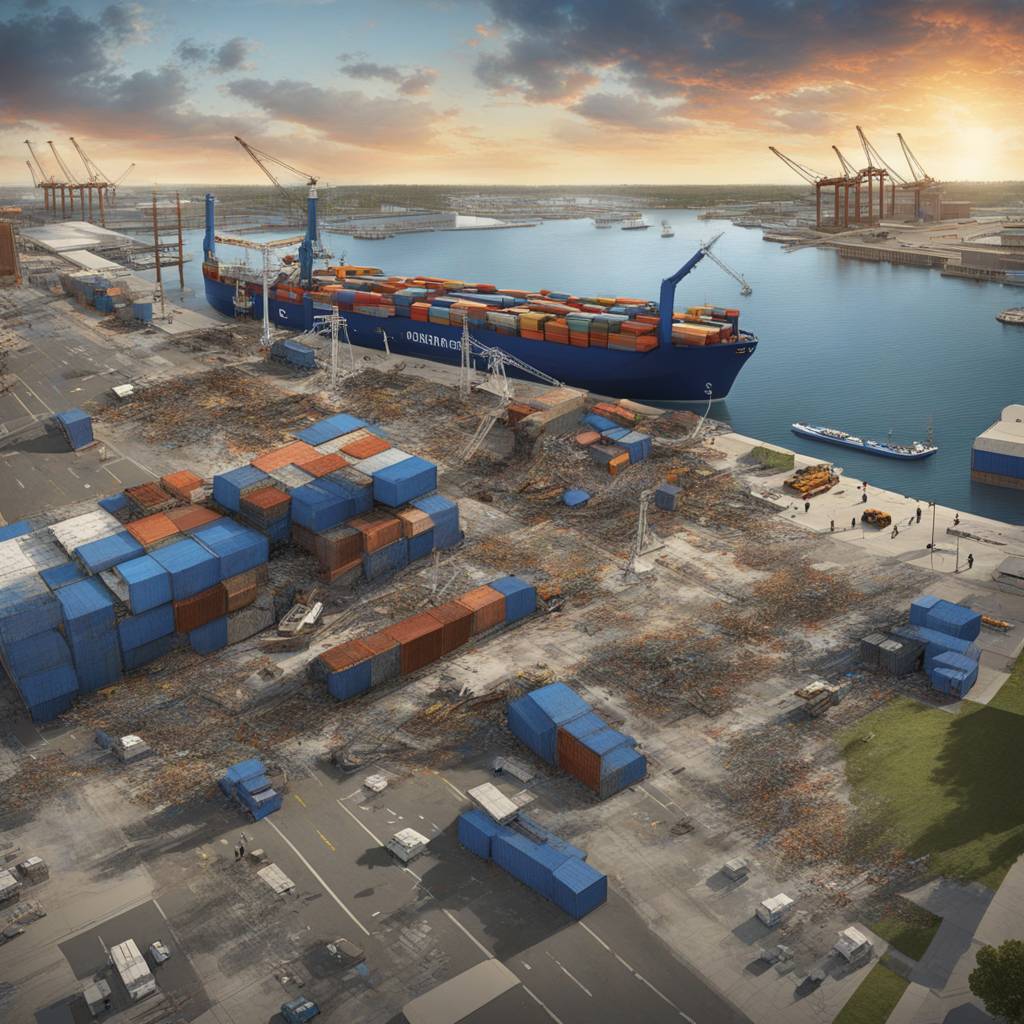The Port of Baltimore may take weeks to reopen following a catastrophic bridge collapse, leaving commuters and workers stranded and disrupting supply chains. The cleanup process to clear the debris from the wreckage is underway, with the Chesapeake 1000 crane arriving to assist in the effort. The search for missing victims is a top priority, and authorities are working diligently to reopen the critical cargo channel. The damage to the cargo ship’s hull will need to be addressed before operations can resume.
Maryland Governor Wes Moore announced plans to cut up and remove portions of the Key Bridge in order to open a temporary restricted channel for vessel traffic. The first phase of lifting a portion of the bridge is scheduled for Saturday, marking the beginning of a long process to reopen the port. The cleanup operation involves a significant amount of heavy equipment, including cranes, tugs, barges, salvage vessels, and Coast Guard boats. More engineers are expected to join the effort in the coming weeks to strategize the removal of the wreckage.
Efforts are also being made to isolate a section of an underwater natural gas pipeline near the bridge collapse site. The Baltimore Gas and Electric Company released gas as a precautionary safety measure to support salvage operations. The cleanup process is complex, with officials estimating it could take days just to examine the area before the first piece of wreckage is removed. Recovering the remaining victims trapped in the underwater wreckage is a top priority.
The economic impact of the bridge collapse is significant, halting the flow of ships in and out of the Port of Baltimore and affecting thousands of dock workers. The port, which handles a large volume of vehicles and farm equipment, is crucial to the local and national economies. Governor Moore has requested federal loan assistance for affected businesses, highlighting the importance of restoring operations quickly to support workers and the economy. Immigrant advocacy group CASA of Maryland emphasized the dangers that construction workers face and the critical work they perform.
The six construction workers who lost their lives in the bridge collapse were from Mexico, Guatemala, El Salvador, and Honduras. Recovery efforts have paused for the remaining four victims due to safety concerns caused by debris. Families of the victims are struggling to come to terms with their loss and are seeking closure as they wait for news of their loved ones. Efforts are being made to support the families of the victims, including fundraising initiatives and requests for humanitarian visas to reunite families.
The community is rallying behind the families of the victims, offering support and assistance during this difficult time. The human toll of the bridge collapse underscores the risks that essential workers face in their daily tasks. The resilience and unity displayed by the community in the face of tragedy are a testament to the strength and compassion of the people affected by this devastating event. As efforts continue to recover the victims and reopen the port, the long-term impact of the bridge collapse on the local and national economy remains to be seen.








